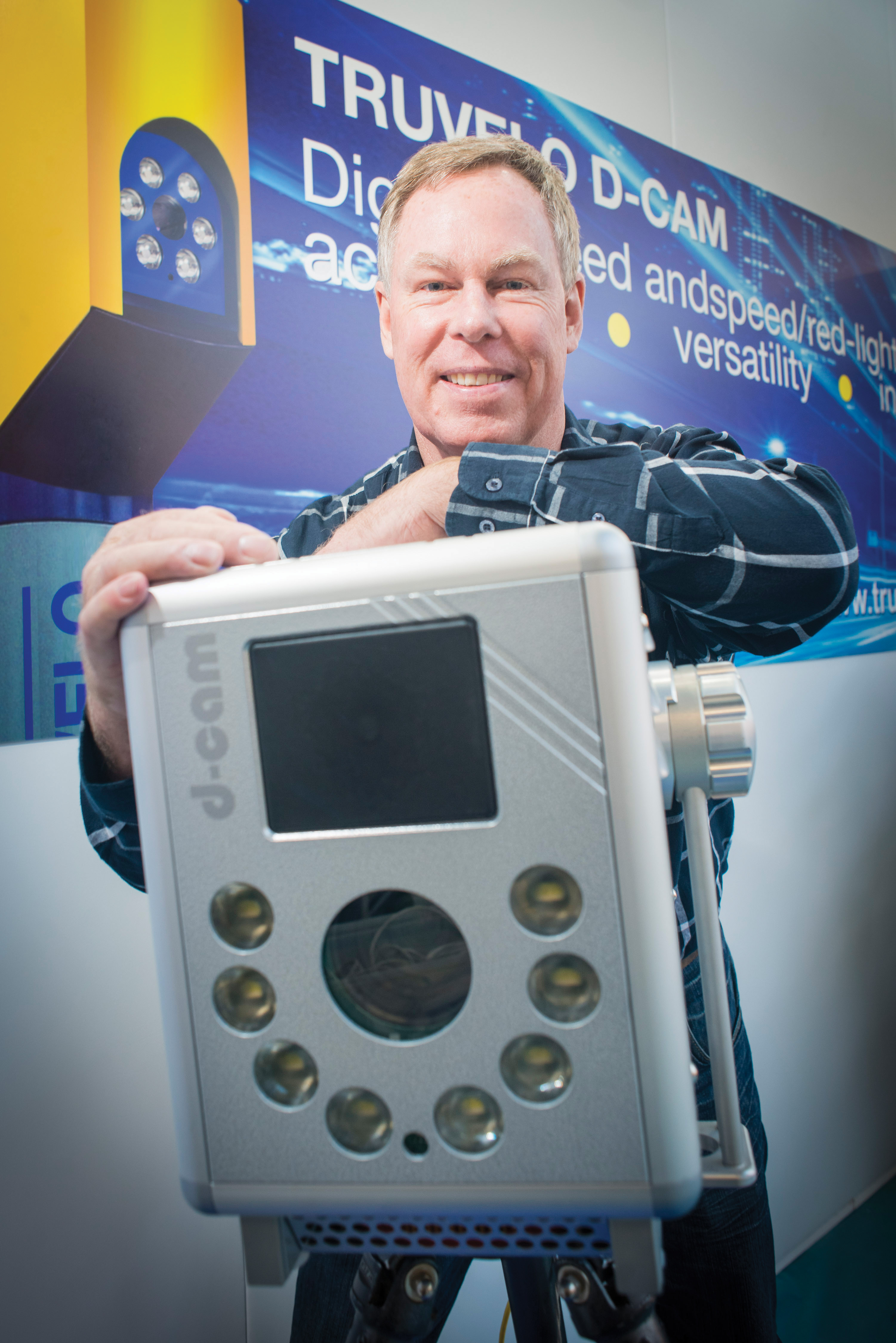Truvelo UK’s D-CAM digital speed and red light enforcement camera has now gained UK Home Office Type Approval.
The camera has been approved for both front and rear photography which, together with choices for the positioning of road markings for secondary speed checks, dramatically increases siting flexibility, as well for as speed on green enforcement. A patented solution which forms a part of the Home Office type approval is the ability to monitor signal phases on newer-generation LED traffic lights.
The camera has been approved for both front and rear photography which, together with choices for the positioning of road markings for secondary speed checks, dramatically increases siting flexibility, as well for as speed on green enforcement. A patented solution which forms a part of the Home Office type approval is the ability to monitor signal phases on newer-generation LED traffic lights.
Truvelo uses an array of three in-ground piezoelectric sensors to trigger the D-CAM. These maximise system accuracy because the position of both the sensors and the lane markings which provide a secondary speed check is known precisely. They also enable axle-based vehicle classification, which allows the camera to select a lower speed threshold where required, as well as lane identification, which is displayed in the data field of images used as evidence.
The camera operates as a speed camera during amber, green and amber-to-red grace phases, taking a single image. Once the amber grace period has passed, the camera switches to red light enforcement mode and takes two images. The first shows true speed and offending vehicles or motorcycles straddling the stop bar; the second confirms that a red light offence has taken place.
The D-CAM’s approval for both front and rear photography not only allows a single camera to be rotated on its post to monitor two different sensor arrays but also enables live enforcement in two directions at the same time – referred to by Truvelo as simultaneous bi-directional (SBD) enforcement. A fixed camera can be used to carry out front plate captures on vehicles travelling in one direction and rear plate captures on vehicles travelling in the other, with the secondary speed check markings positioned at the same point on the road.
The Truvelo back office server (TBOS) receives encrypted images, stores and writes them to a CD, which is reviewed by the Truvelo Violation Manager (TVM). This creates the vital ‘air gap’ required by the UK Home Office for automated enforcement systems. D-CAM has been designed to be compatible with
“We’ve worked very hard to give the market a highly accurate, digital automated enforcement solution which is both cost effective and cost efficient,” says Peter Hill, Truvelo’s UK Operations Director. “Home Office type approval, which is generally accepted to be the world’s most stringent test, emphasises just how successful we’ve been.
“The D-CAM’s various new features make it a formidable presence in the automated enforcement market. The simultaneous bi-directional capability can result in installations that cost between one and a half and one and a third less than previous-generation two-camera set-ups and the extended secondary speed check coverage is a major bonus when looking to site enforcement cameras at crowded and complex intersections. Our ability to work with LED traffic signals also places us ahead of the field.”










